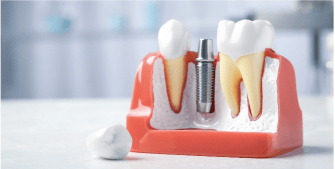Your jaw bone plays an important role in not only holding your teeth in place, but also giving structure and definition to your face. Bone is maintained through stimulation from tooth roots as you chew. When teeth are missing, there is no root, and the bone begins to deteriorate or resorb. Bone grafting is used by MOSAIC Maxillofacial Surgical Arts & Implant Centers in Tampa, FL to build up weak or lost bone mass. Grafting assists with dental implant placement, facial structure preservation, and oral function optimization.

Reasons Bone Grafting May Be Used
- Preparation for Dental Implants and All-on-X Treatment: Additional bone can be added to thicken or widen the bony ridge and improve bone quality to create a solid base for implant placement.
- Recovery from Gum Disease: Periodontal disease can lead to bone loss, and a bone graft can replace missing volume, stabilize the jaw, and help prevent future deterioration.
- After Tooth Extraction: Empty tooth sockets fill in very predictably with new bone, but grafting can help thicken thin socket walls to maintain adequate bone volume and width.
- To Restore Sinus Position: Missing teeth in the posterior of the upper jaw can cause the sinuses to sink into the empty space. Bone grafting lifts the sinuses back into place.
- To Preserve Facial Structure: As bone resorbs, it can alter the structure of the face and make cheeks and lips appear to collapse. Bone grafting restores proper facial contour.
Different Types of Bone Grafts
Three main types of bone grafts are commonly used in oral surgery.
Autogenous Bone: Autogenous bone grafts or autografts use living bone that is harvested from your own body. Common sites include the lower leg (tibia), hip, chin, or jaw. Since the bone is alive, it can help generate new bone growth and be used for large or small repair areas. The risk of rejection is minimal because the bone comes from your body. One drawback of autografts is that they require a separate surgery to harvest the bone, and then this area must also heal.
Allogenic Bone: Allogenic bone grafts or allografts use dead bone that is harvested from a cadaver. This type of bone is used to create a scaffold to support new bone growth from adjacent areas. Because cadaver bone is used, a separate surgery for harvesting is not necessary.
Xenogenic Bone: Xenogenic bone grafts or xenografts use dead bone from a non-human source, such as a cow or pig. Similar to allografts, the harvested bone is used as scaffolding for new bone growth. The bone is heated to kill any living cells and reduce the risk of rejection. One drawback to allografts and xenografts is that the bone graft does not contain any living cellular material to stimulate new bone formation.
Each type of bone graft has its advantages and disadvantages, but studies have shown that they can all be effective options if placed correctly in the proper environment. Autografts tend to heal more quickly and provide more predictable bone regeneration than allografts and xenografts, but all options will require recovery time to allow for bone growth and fusion.
Your oral surgeon will discuss your options and which type of graft is appropriate for your situation, and the type of bone regeneration or stabilization required. If you are receiving an autograft, a separate surgery will need to be scheduled to harvest the bone.
What to Expect During a Bone Graft
A local anesthetic or conscious sedation will be administered to ensure your comfort and prevent any pain during the procedure. The anesthetic will numb the nerves in your gums and along your jaw. The bone graft material will then be prepared, and the oral surgeon will make an incision in the gum where the graft will be placed. The gum will be separated from the bone to allow for better access.
If a block of bone is being used, it will be affixed to the area using titanium screws or a dissolvable membrane that will protect the graft and encourage bone regeneration. If small chips or powder are being used, they will be applied in the empty socket, between two sections of bone, or directly to the bone and may be held in place by an adhesive material.
The oral surgeon will re-cover the area with the gum and close the incision with a few stitches. Dissolvable stitches may be used so that you do not have to come back to have them removed. It typically takes around four to six months or longer for the graft to fuse with the existing bone and support the development of new bone.
Comfort and Recovery After Your Treatment
The actual procedure should be painless, though your mouth will be sore once the anesthetic wears off. You can take over-the-counter pain relievers to manage any discomfort and reduce swelling. Applying ice packs to your cheek can also help. Take any antibiotics as prescribed to prevent infection, and gently change the dressing over the incision site as needed.
It is important to protect the graft site as it heals. This means eating a liquid and soft food diet for several days after surgery. Foods that are hard or crunchy can cause pain and may disrupt the graft. To improve your comfort and minimize bleeding, you can elevate your head when sleeping or lying down to rest. In addition, you should avoid any strenuous activity or exercise that may put strain on the incision site. Any pain in your jaw should improve each day, and you should feel back to normal after about a week.
The Bone Grafting Results
Your oral surgeon will monitor your recovery and may take x-rays a few weeks after surgery to see how the graft and if the new bone is growing properly. It will take several months until the bones have fused and are strong enough for dental implant placement or other procedures.
If you would like to know more about Bone Grafting, contact our Tampa, FL area offices located in New Port Richey, Clearwater, Lutz, and Westchase.


